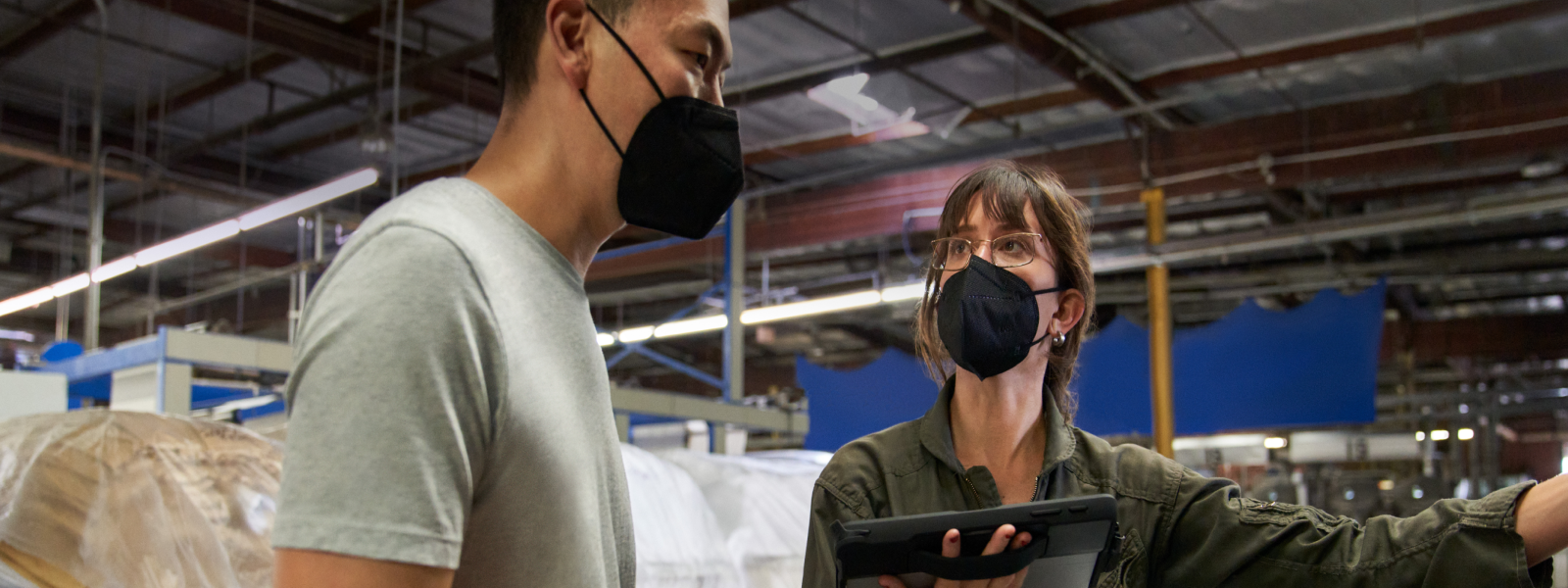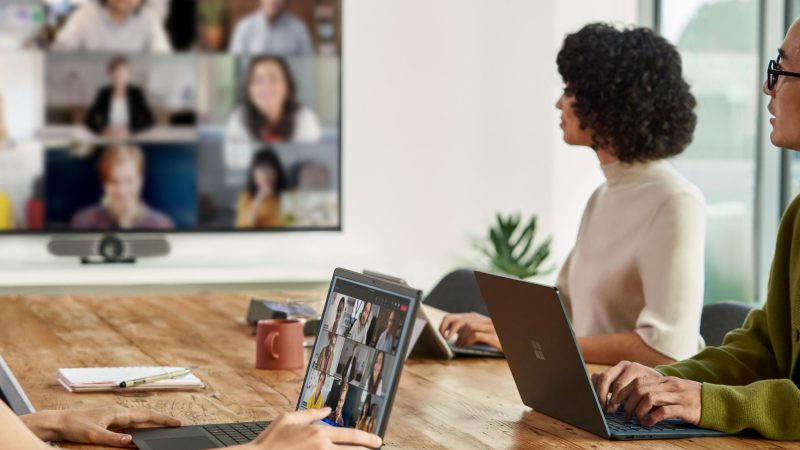
Three ways technology has empowered frontline workers

COVID-19 has highlighted how much we depend on frontline workers – from the nurses and doctors we applauded from balconies as they returned home from shifts through to the delivery workers who brought us groceries and essential items when we were unable to leave home.
The world has more than 2 billion frontline workers, including retail staff, factory workers and food supply chain workers. Their work increasingly involves complex business and industrial processes and advanced software applications.
In Microsoft’s recent report, Don’t Just Celebrate Your Frontline Workers – Empower Them, we explain how organisations can support their frontline workers by equipping them with tools to thrive no matter where or how they work.
“The original hybrid workers”
“Frontline workers are like the original hybrid workers, since they’ve always been combining technology with onsite work,” points out Kristina Behr, Microsoft’s Vice President of Product Management for Frontline Workers and Industry.
As businesses transition into an increasingly hybrid world, leaders are exploring new possibilities and potential for business transformation across every industry – and it all starts on the frontline with those most crucial team members.
“An information worker is someone who uses information to make decisions about processes and then collects information to iterate and improve those processes,” says Emma Williams, Corporate Vice President of Microsoft Office Modern Workplace Transformation. “We see frontline workers are fundamentally the same, only more mobile.”
Frontline work has transformed exponentially over the past two years. Curbside pickup services, virtual consultations, and remote expert assistance are just some examples of how new technology has given rise to an increasingly flexible and connected frontline workforce.
Technology has helped frontline workers from a range of sectors adapt and flourish in the rapidly evolving hybrid workplace. Here are some of the transformations we’ve seen with some of our customers across the world.
Retail: seamless online collaboration
When the first wave of COVID-19 shutdowns happened in March 2020, automative and hardware retailer Canadian Tire had to shift overnight from a traditional, bricks-and-mortar operation to a hybrid model. This included adopting a new online e-commerce platform and a curbside pickup service to limit customer–worker contact.
With the help of Microsoft, the company implemented cloud-based solutions to allow workers to communicate easily with customers. Sales spiked. And the company was able to keep frontline workers safe and healthy.
“We’ve had rave reviews from our customers about the great experience using our curbside pickup at the store,” says Paul Medeiros, associate dealer and owner of a Canadian Tire store in Ontario, Canada.
“They’re blown away by the communication and level of service they’re getting via [Microsoft] Teams, and the resulting trust means more overall shopping with Canadian Tire.”
Rescue: coordinating life-saving missions
New technological capabilities have not been limited to the pandemic response. For rescue workers like firefighters, medics and search-and-rescue specialists, the ability to think on your feet and adapt to new tools quickly can save lives.
Wisconsin’s Western Lakes Fire District upgraded its communications infrastructure years ago, implementing Microsoft 365 and Teams to enhance collaboration and coordination. These tools have allowed team members to liaise with those in other fire districts and make crucial decisions in real time across a region of more than 550 square kilometres.
But the real game-changer was the integration of livestreamed drone footage on Teams. Now, real-time situations can be monitored via tablets, phones or mobile data terminals onsite or from emergency vehicles or command posts.
“The use of the drone with Teams allowed a four-year-old boy, who went missing in a state park, to be found much faster than by personnel walking through the park – three times faster than what we achieved in training missions without the drone,” says Fire Chief Brad Bowen.
Care: reaching patients virtually
Healthcare has seen huge changes through frontline digitisation. Concerns about the wellbeing of patients and the impracticality of in-person visits meant that frontline workers have had to adapt their tools, methods and mindsets in order to continue giving care to patients.
“This massive push into telemedicine forced a rethink of everything, from the way we keep medical records to creating a doctor visit,” Behr says.
Incorporating existing systems of engagement like chat, text and video into protocols that have traditionally underused technology has had some unexpected consequences, especially in healthcare.
Speaking to an oncologist from the National Health Service, Behr learnt that digitisation has improved the day-to-day practice of healthcare staff and is improving patient outcomes.
“She told me that patients are frequently more relaxed discussing treatment options from home in a safe space with other family members and a dog nearby.”
Hybrid work on the frontline
Frontline workers have kept the world moving during the pandemic – they’ve also been disproportionately impacted by it. Business leaders need to rethink how they view and value these critical professionals, and consider the role technology can play to help frontline workers thrive in the new world of work.
Ready to empower your frontline workers? Read our full report.
Categorised in: All Industries, Modern Work
This post was written by Microsoft Australia







